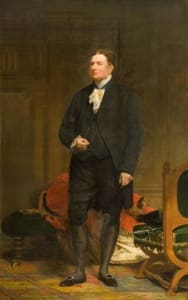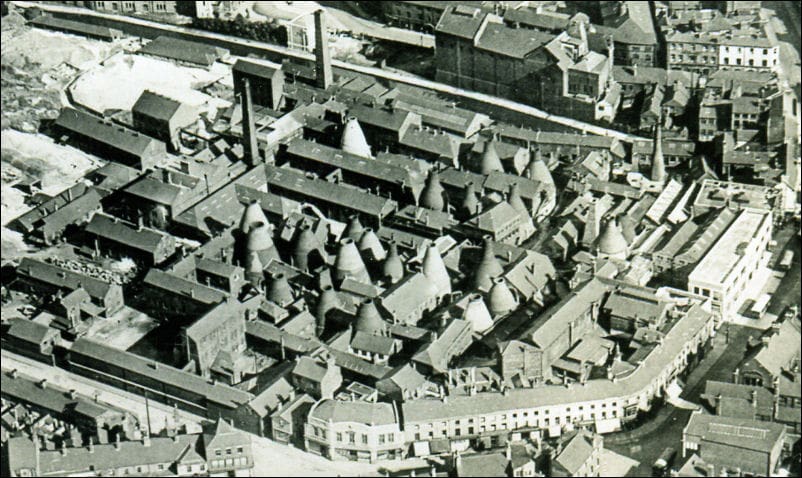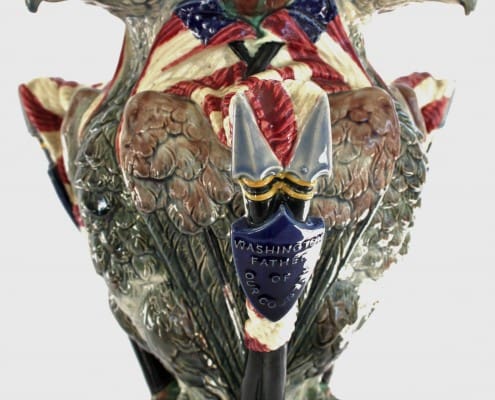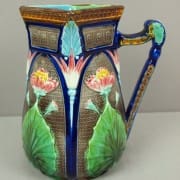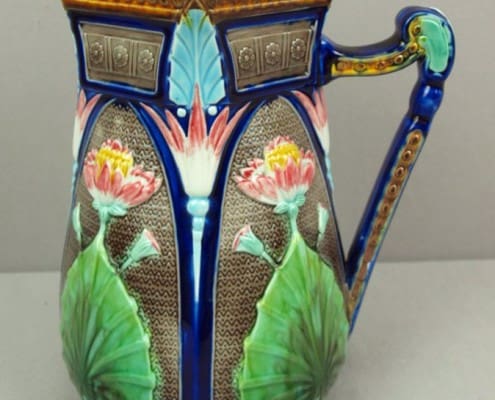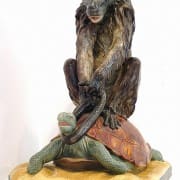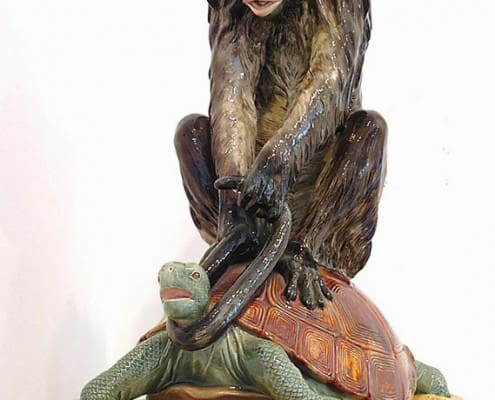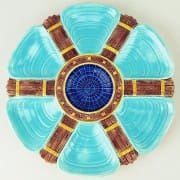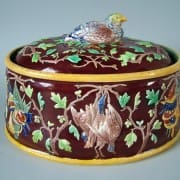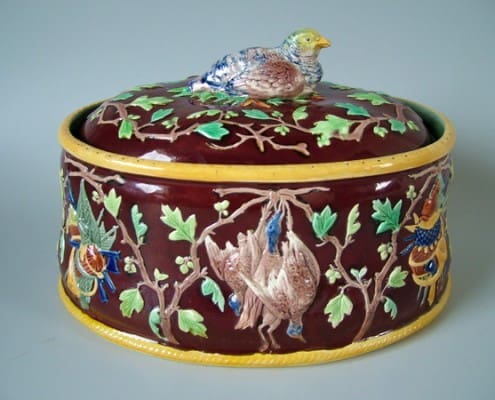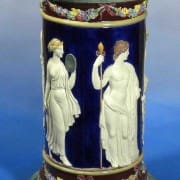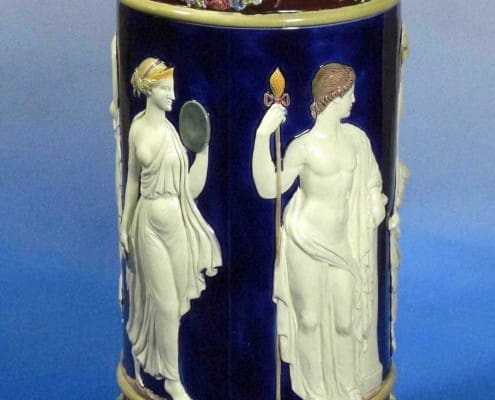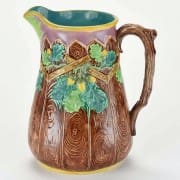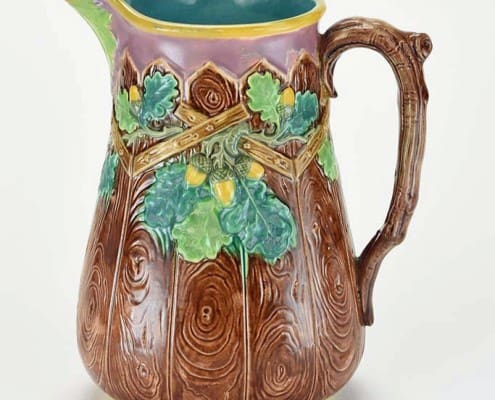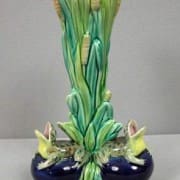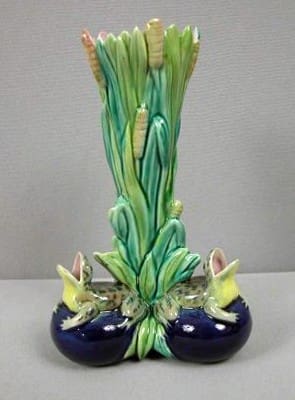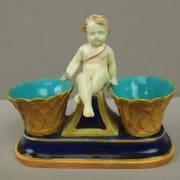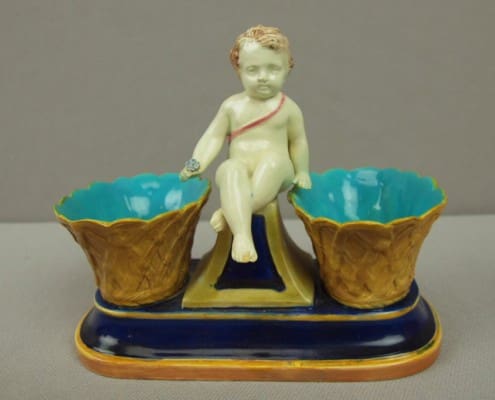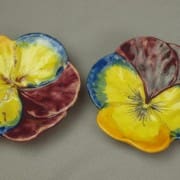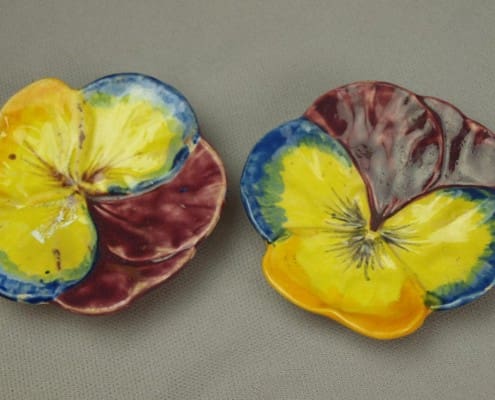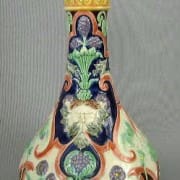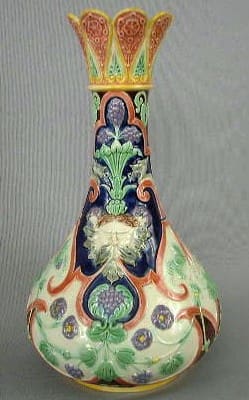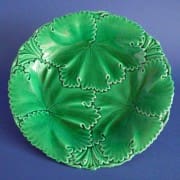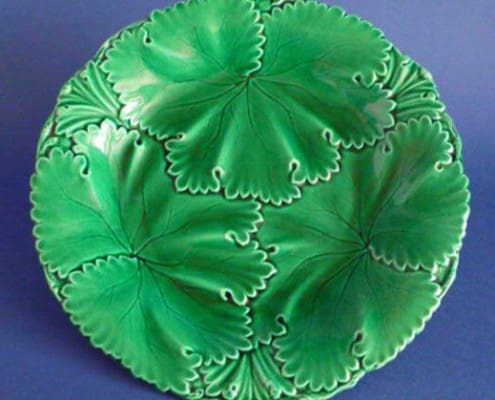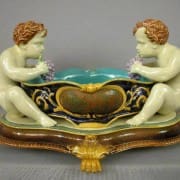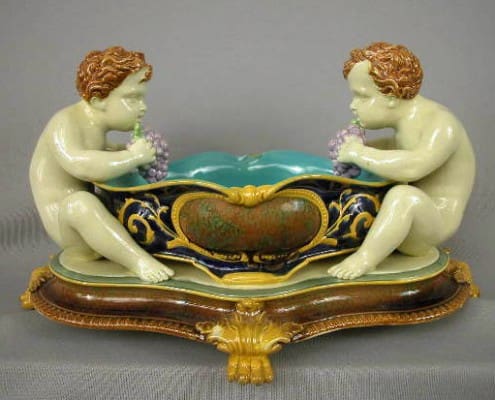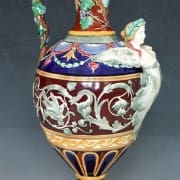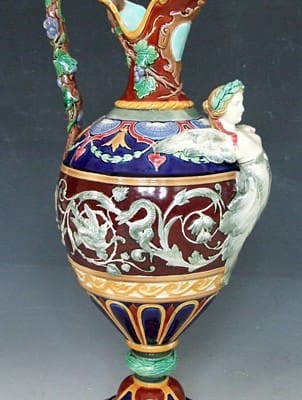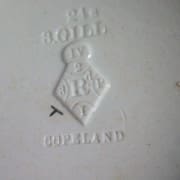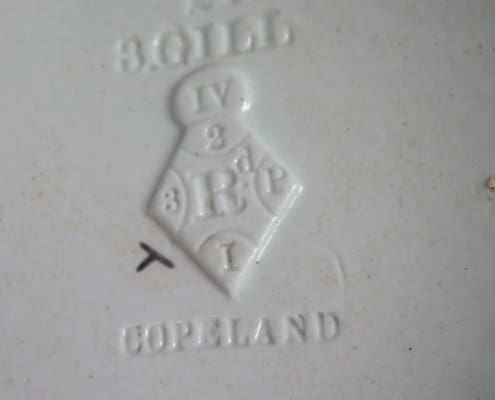Copeland
Josiah Spode established the Spode Works in Stoke-on-Trent in 1770. The factory was purchased by William Taylor Copeland in 1833 who operated with partner Thomas Garrett under the name Copeland and Garrett. Garrett retired in 1847 and the company was renamed W.T. Copeland. At the time of the 1861 census, the firm employed over 800 workers. Copeland brought his four sons into partnership in 1867 and renamed the firm W. T. Copeland & Sons. The company remained in family hands well into the twentieth century and continues today as Spode Ltd.
Copeland is best known for its production of transferware, Parian, and fine bone china. While the firm produced a sizeable amount of majolica, it rarely advertised such. A graduated series of pitchers in the Egyptian lotus pattern is among the best known of Copeland majolica. A tricorn vase bearing three eagles was executed for the 1876 Philadelphia Centennial Exhibition. The Spode Museum retains a large-scale depiction of “Sloth and Mischief” produced in majolica glazes. Copeland also produced a variety of green majolica plates and platters.
Majolica produced by W. T. Copeland & Sons bears the mark COPELAND in quite small letters which may be obscured by thick majolica glazes.
Photo Credits: Strawser Auctions Live Auctioneers Ebay images Madelena Antiques Antiques from Trilogy Philppe Meunier & Juan-Alonso Defrocourt Karmason Library

